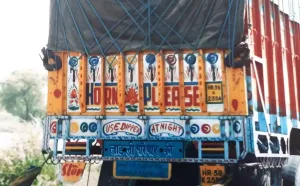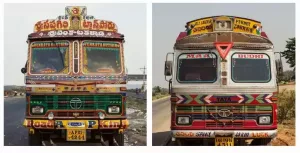
Truckers in India asks motorists to hoot before passing.
“When we decorate a truck, when we drive a truck… it should look like a beautiful bride.”
This view, first quoted on the 2012 documentary “Horn Please”, is shared by over 20 million truck drivers in India, most of whom drive in trucks that are painted and decorated inside and outside to reflect their religious, sentimental and emotional viewpoints.
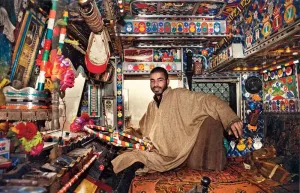
While each truck is painted to the taste and budget of the owner-driver, all the trucks have the words “Horn Please” or “Blow Horn” painted somewhere on the back, often with the plea “Use Dippers At Night”.
Cacophony and chaos
The “Horn Please” or “Blow Horn” is the driver’s way to ask motorists to alert him when they start to pass, so that he can assist by edging to the left or slowing down a bit.
The dipper request means flashing the lights, for the same reason.
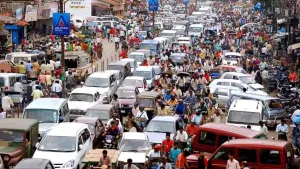
This hooting and dipping is needed because India’s roads are mostly a cacophony of hooters and a total chaos of entire families on scooters, overloaded cyclists, racing Tuk Tuks, holy cows, pedestrians staring at their cellphones and even the odd elephant.
Often, that is just on the sidewalks.
For it is a little known fact that India’s millions of drivers, riders and cyclists all obey only one law on the road, that being the law of gravity.
And they all live – or die – by one rule: If there is a gap, take it!
19 deaths per hour
Such chaotic traffic flow means going head-on against two trucks bearing down the wrong way on a two-lane highway is nothing unusual, nor is being swarmed by a sea of kamikaze cyclists, Tuk-Tuks and motorbikes in every intersection.
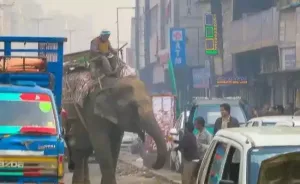
Trying to explain the chaos on the roads to this author, one taxi driver said, “we don’t believe in death, we believe in reincarnation”.
This casual view of the finality death is often blamed for what was an average of 19 deaths from 53 accidents every hour on India’s roads in 2022, according to a report issued in November 2023 by India’s Ministry of Road Transport and Highways.
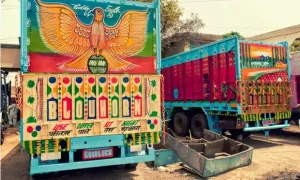
Painted to inspire
On such stressful roads, it is no wonder then that truckers will want to decorate their trucks with paintings, scriptures, floral patterns and poems that soothe the soul, as well as landscapes and animals that aim to inspire.
Many truckers also try to improve their luck by making garlands of plants believed to bring luck, like marigold flowers, or ward of evil, like chillies or lime. Often, one will also see a favourite pair of old shoes tied to the truck.
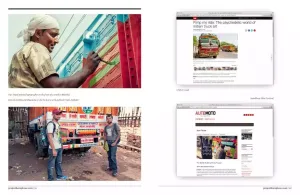
This truck art has been commemorated in a 160-page coffee table book Divya Jain, whose father-in-law Pawan has transport and logistics company, and in the 2012 documentary “Horn Please” by Graphic Design professor Shantanu Suman, who spent two years documenting the painted trucks of India for his thesis.
The only other place on Earth that can rival India for colourful trucks are the minibus “Jeepneys” in the Philippines.
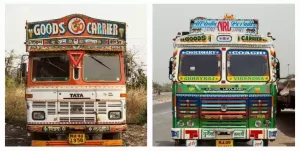
Mostly men behind the wheel
The Indian truck driver is still overwhelmingly male, with very few women in India earning a living driving taxis and buses. But the number of women drivers in India increased slightly in 2023, after 20 women who were selected by Baton Transport and the Vega Group finished their training to drive trucks in Karnataka, the fourth largest state in India with a population of over 61 million people.
